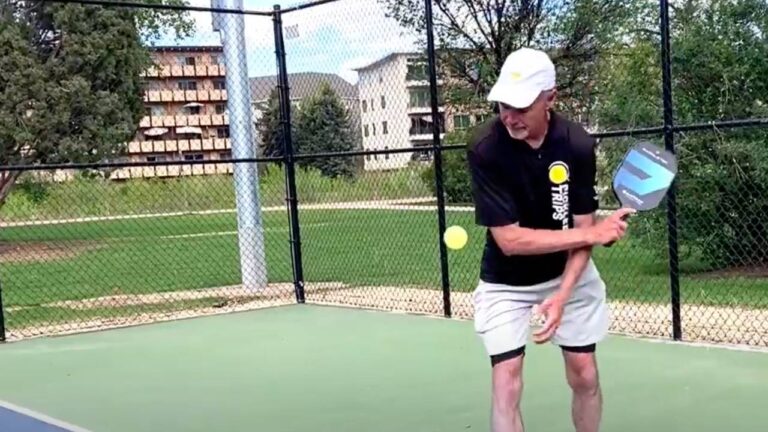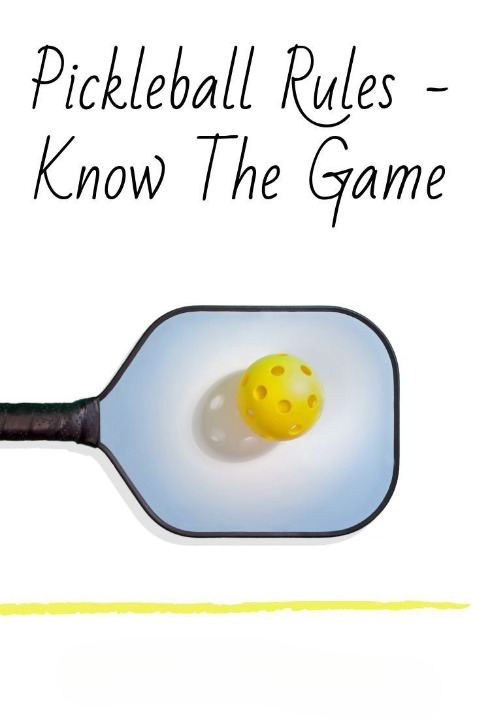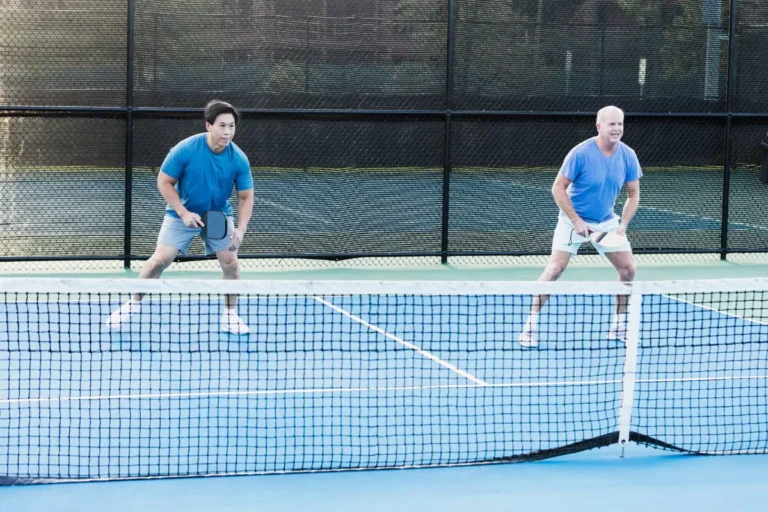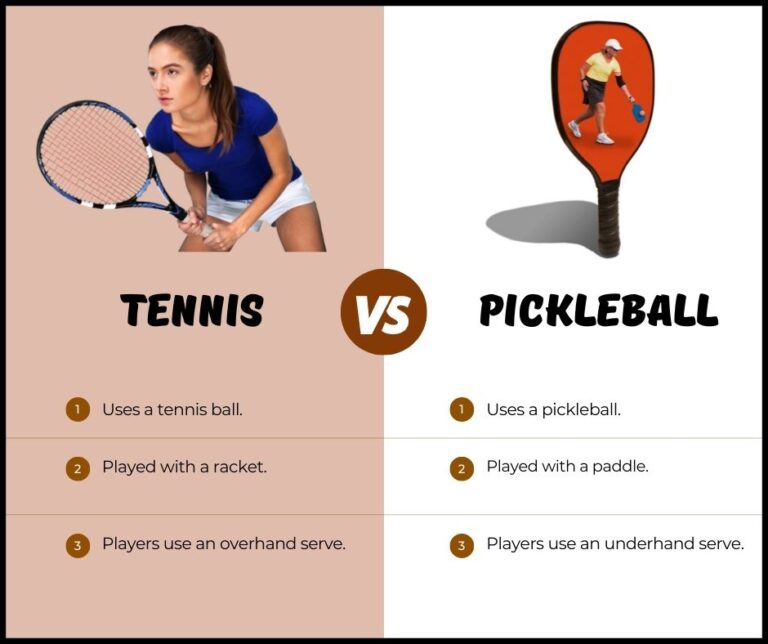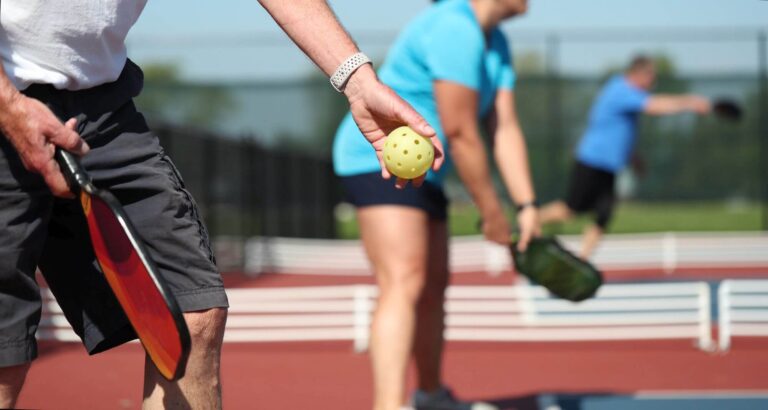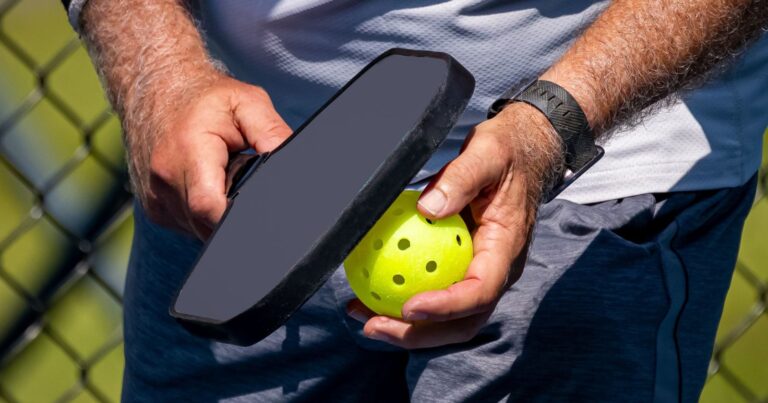Mastering the Pickleball Forehand Stroke: Essential Tips & Techniques
To excel in pickleball, mastering the forehand is crucial. This guide offers essential tips and techniques, covering everything from the proper grip and stance to advanced swing mechanics. Whether you’re aiming to increase power, add spin, or refine accuracy, the strategies outlined will elevate your game, ensuring you execute powerful and controlled forehand strokes consistently. Dive into these expert insights and practice drills to dominate the court with confidence
Key Takeaways
- A solid forehand is the backbone of an effective pickleball game, enabling offensive play and powerful shots.
- Proper stance, grip, swing mechanics, and footwork are crucial for developing a consistent and versatile forehand stroke.
- Master techniques like topspin, slice, and power shots to keep opponents guessing and gain a competitive edge.
- Regular targeted practice using drills is key to ingraining good habits and continually improving your forehand skills.
So, grab your paddle, lace up those sneakers, and get ready to take your game to new heights. This comprehensive guide will walk you through the nuts and bolts of the pickleball forehand, from nailing the proper grip to unleashing topspin tornadoes that’ll make your opponents dizzy. Buckle up, folks – it’s time to become a forehand force to be reckoned with!
Understanding the Basics of a Forehand Stroke
Before we dive into the nitty-gritty, let’s lay the groundwork by dissecting the fundamental components of a solid pickleball forehand.
The Importance of Grip
Your grip is the foundation upon which your entire forehand is built. Imagine trying to paint a masterpiece while clutching the brush like a caveman – not a pretty picture, eh? The same principle applies to your pickleball stroke.
The two most common grips for forehands are the Eastern and Continental grips:
- Eastern Grip: This grip positions the paddle perpendicular to the ground, with a V-shaped formation between your thumb and index finger. It’s a favorite among players who prioritize spin and control.
- Continental Grip: Here, the paddle faces more towards you, with the grip resting in the fleshy part of your hand. This grip is ideal for those seeking raw power and flat shots.
Experiment with both grips to find your sweet spot, and remember – a comfortable grip is the key to unleashing your full forehand potential.
Optimal Stance for Maximum Efficiency
Your stance is the launchpad for every shot, so you’d better treat it with the respect it deserves. The ideal pickleball stance for a forehand stroke is the square stance – feet shoulder-width apart, knees bent, and weight evenly distributed.
This stance not only provides a solid base for your swing but also allows for seamless weight transfer and rotation, enabling you to put every ounce of your body’s might behind that shot. It’s like a perfectly-tuned sports car, ready to peel out and leave your opponents in a cloud of dust (or, in this case, a flurry of pickleballs).
Advanced Techniques for a Powerful Forehand
Now that we’ve nailed down the fundamentals, it’s time to crank up the heat and dive into the advanced techniques that’ll take your pickleball forehand from “meh” to “holy cow, did you see that?!
Swing Mechanics
Unleashing a pickleball forehand with devastating power and precision is like conducting a well-rehearsed symphony – every movement counts, and timing is everything.
The key components of a flawless swing include:
- Hip and Shoulder Rotation: Don’t just rely on your arms – engage your core and rotate your hips and shoulders to generate maximum torque. It’s like a coiled spring, ready to unleash a tsunami of power.
- Proper Backswing and Follow-Through: Your backswing should be smooth and compact, setting the stage for an explosive forward swing. And don’t forget to follow through fully, allowing your arm to extend and your paddle to complete its arc. Cut the follow-through short, and you might as well be swinging a wet noodle.
When all these elements come together in perfect harmony, you’ll be painting lines with your pickleball strokes, leaving your opponents utterly bewildered.
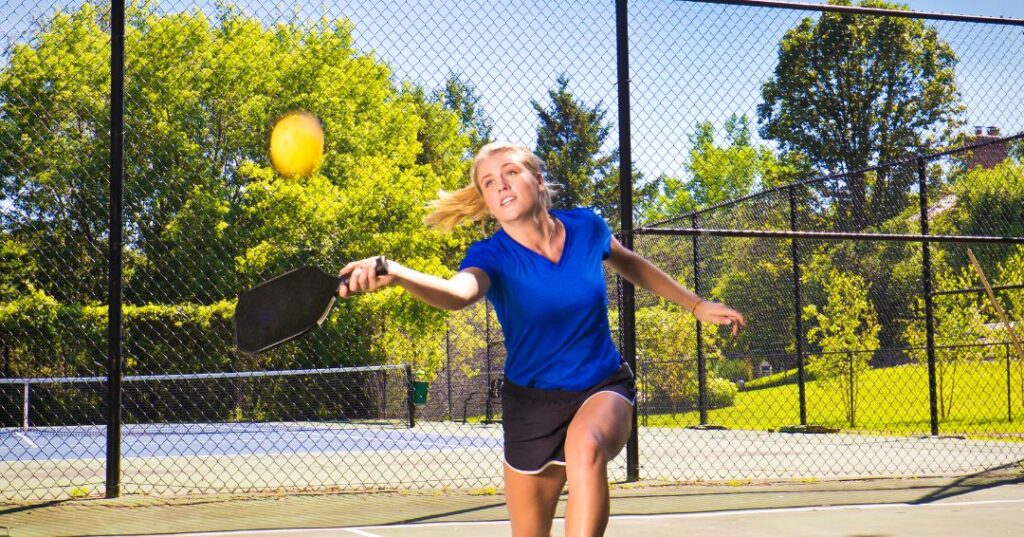
Achieving the Perfect Contact Point
Even the most technically sound swing means nothing if you don’t make solid contact with the ball. The secret to a powerful and precise pickleball forehand lies in striking the ball at the optimal contact point.
For maximum power and control, aim to make contact with the ball when your paddle is slightly in front of your body and your arm is extended. The paddle face should be relatively flat, forming a smooth, uninterrupted path for the ball to follow.
Timing is also crucial – try to meet the ball at the peak of its bounce for maximum leverage and control. With practice, you’ll develop an innate sense of when to pull the trigger, turning every forehand into a well-timed strike that leaves your opponents reeling.
Adding Spin and Power to Your Forehand
Once you’ve got the basics down pat, it’s time to start adding some flair to your pickleball forehand. Spin and power are the secret ingredients that’ll take your game from bland to grand slam.
Techniques for Topspin
Topspin is the pickleball equivalent of a curveball – it not only keeps your opponents guessing but also helps you gain control over the court. To add topspin to your forehand, you’ll need to roll the paddle up the back of the ball, imparting that magical forward rotation.
The key to mastering topspin is in the follow-through. As you extend your arm and paddle, imagine a continuous brushing motion over the top of the ball. This subtle adjustment will have that pickly sphere dipping and diving like a rollercoaster, leaving your opponents dizzy and disoriented.
Mastering the Slice Forehand
If topspin is the offensive weapon in your pickleball arsenal, then the slice forehand is your trusty shield – a defensive stroke that can neutralize even the most blistering shots.
To execute a slice forehand, start with a higher backswing and swing down across the back of the ball, imparting backspin. The slice will cause the ball to skid off the court, often catching your opponent flat-footed and scrambling.
But don’t just rely on the slice as a defensive tactic – mix it up and use it to disrupt your opponent’s rhythm and keep them off-balance. A well-timed slice can be just as devastating as a blistering power shot, forcing your opponent to adjust their positioning and timing on the fly.
Practice Drills to Enhance Forehand Skills
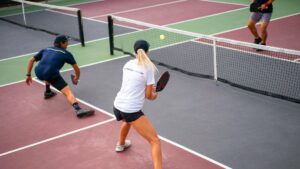
Rome wasn’t built in a day, and neither is a world-class pickleball forehand. Consistent, targeted practice is the key to ingraining good habits and continually improving your stroke.
Drills for Consistency and Control
Before you start blasting balls like a seasoned pro, you’ll need to lay the groundwork with drills that hone your consistency and control.
- Wall Drills: There’s no better training partner than a sturdy wall. Position yourself a comfortable distance away and spend some quality time hitting controlled forehands, focusing on proper technique and ball placement.
- Cross-Court Forehands: Grab a partner and take turns hitting cross-court forehands, aiming for specific targets on the opposite side of the court. This drill will not only improve your accuracy but also help you develop a feel for spinning the ball and managing its trajectory.
As you progress, you can introduce targets or cones to further challenge your precision and shot placement.
Power Drills
Once you’ve got the basics down, it’s time to start cranking up the intensity and adding some oomph to those forehands.
- Acceleration Drills: Practice transferring your weight and generating power from your core and legs. Start with a slow, controlled swing, and gradually increase your acceleration as you make contact with the ball.
- Distance Drills: Set up targets or cones at varying distances and practice hitting powerful forehands that clear each obstacle. This drill will help you develop a feel for gauging the necessary power for different shot lengths.
Remember, the key to developing power is maintaining proper form and technique, even as you crank up the intensity. Don’t sacrifice control for the sake of brute force – true power lies in the perfect marriage of technique and raw strength.
Here’s the continuation of the article:
Common Mistakes and How to Avoid Them
Even the most seasoned picklers aren’t immune to the occasional lapse in form or technique. To truly master the pickleball forehand, you’ll need to identify and correct some common pitfalls.
Overcoming Over-Swinging
There’s a fine line between swinging with purpose and flailing like a windmill caught in a tornado. Over-swinging is a cardinal sin in the pickleball world, often resulting in poor contact, loss of control, and a whole lot of frustration.
The antidote? Slow things down and focus on generating power from your core and legs, rather than relying solely on your arm strength. A compact, controlled swing will not only improve your accuracy but also reduce the risk of injury from those wild, haymaker swings.
Ensuring Proper Follow-Through
Imagine a golfer stopping their swing mid-backswing – it’s an incomplete motion that robs the shot of its full potential. The same principle applies to pickleball forehands.
An incomplete follow-through is a surefire way to sap your shots of power and control. Strive to extend your arm fully and allow the paddle to complete its arc, catching it with your off-hand if necessary. This simple adjustment will not only add oomph to your strokes but also improve your overall body mechanics and stability.
Conclusion
Congratulations, picklers! You’ve just taken a giant leap towards mastering one of the most crucial weapons in the pickleball arsenal – the formidable forehand stroke.
Remember, the journey to pickleball greatness is a marathon, not a sprint. Continually refine your technique, experiment with different grips and spins, and don’t be afraid to step outside your comfort zone during practice. Consistent, targeted training is the key to ingraining good habits and continually elevating your game.
So, grab that paddle, hit the courts, and start unleashing forehand fury on your opponents. With the knowledge and skills you’ve acquired from this guide, you’ll be painting lines, dictating the pace of play, and leaving your adversaries utterly bewildered.
Keep that competitive fire burning, and always remember – a well-executed pickleball forehand is not just a shot, it’s a testament to your dedication and mastery of the game. Now go forth and conquer, you forehand force of nature!
Additional Resources
Still hungry for more pickleball wisdom? Don’t worry, we’ve got you covered! Check out these additional resources to further hone your pickleball prowess:
- Paddletek Pickleball – In-depth guides on power shots and advanced techniques.
- TopspinPro Forehand – Comprehensive tutorials on forehand spin variants.
- PickleballXP Forehand – Step-by-step video lessons on proper forehand mechanics.
- Picklr Nation Forehand – French-language resource on forehand strategies and common mistakes.
And don’t forget to check out these related articles right here on PickleballToolbox.net:
- Master Pickleball Strategy for Doubles Play – Elevate your court savvy and outmaneuver your opponents.
- Best Pickleball Videos – Top-notch visual resources to supplement your training.
- The Top 10 Most Hilarious Pickleball Court Etiquette Fails – A lighthearted look at picklers gone wild (and a reminder of what not to do).
With these invaluable resources at your fingertips, the path to pickleball mastery has never been clearer. So, what are you waiting for? Grab that paddle and start painting those lines – the pickleball world is your canvas!

